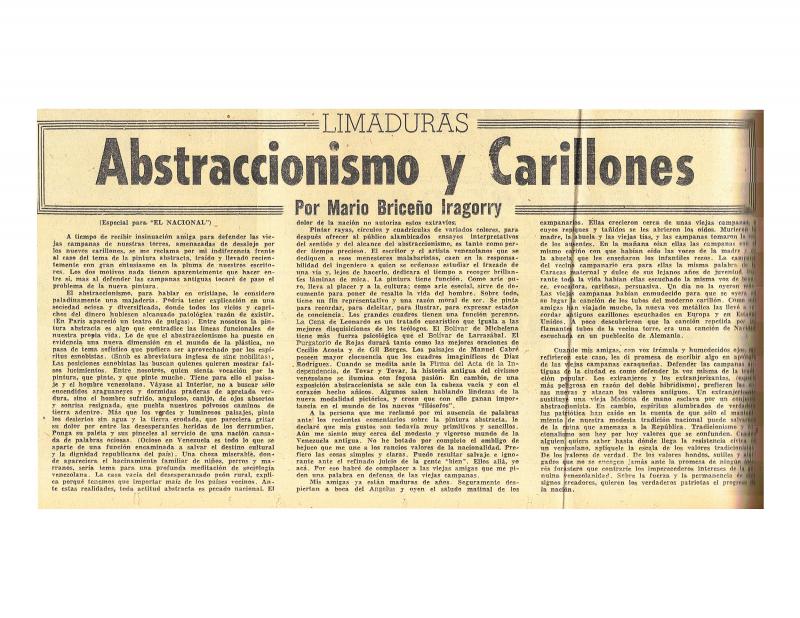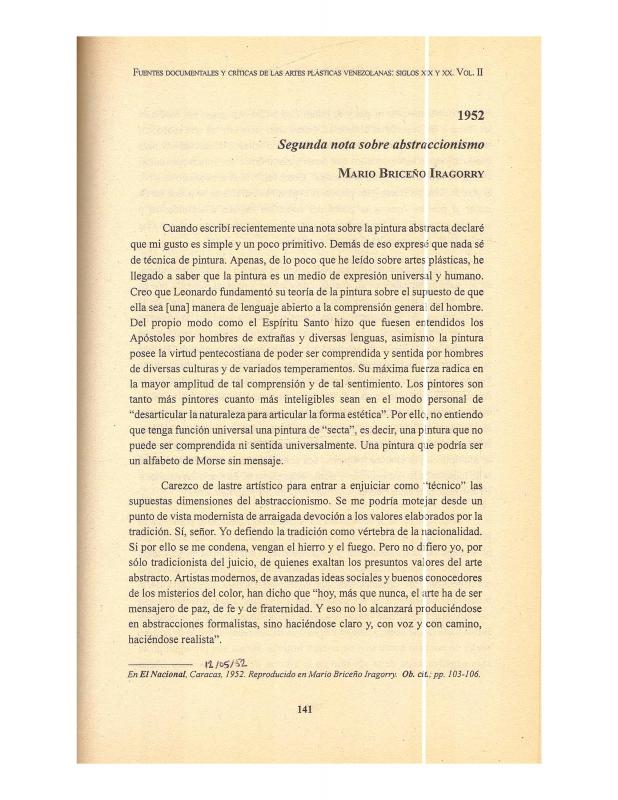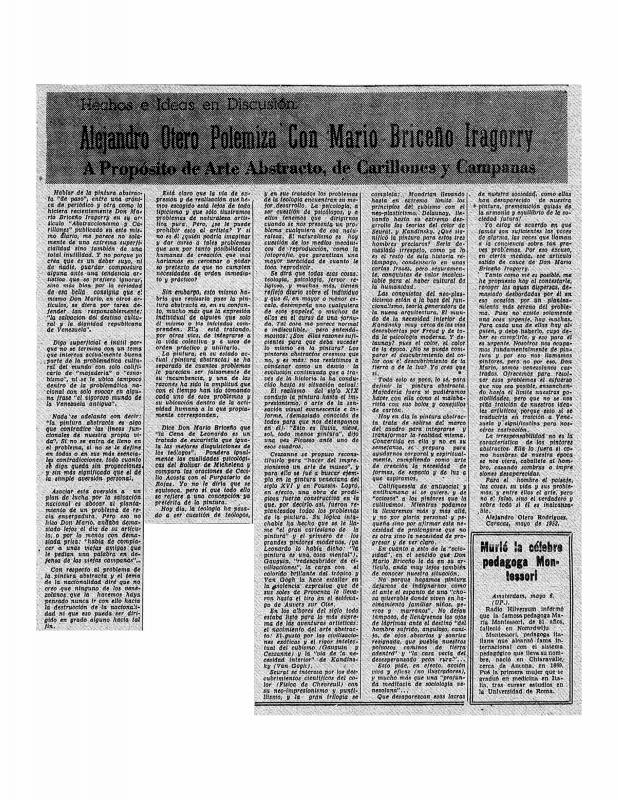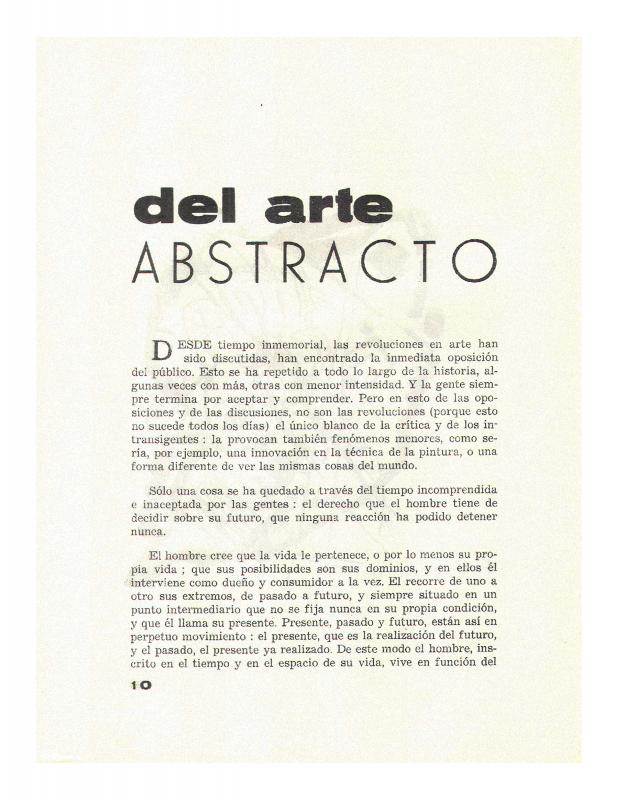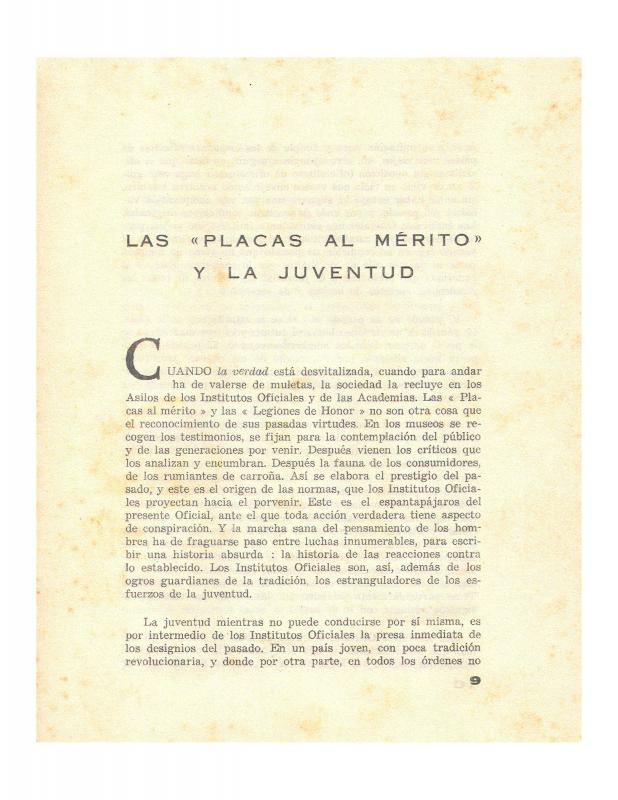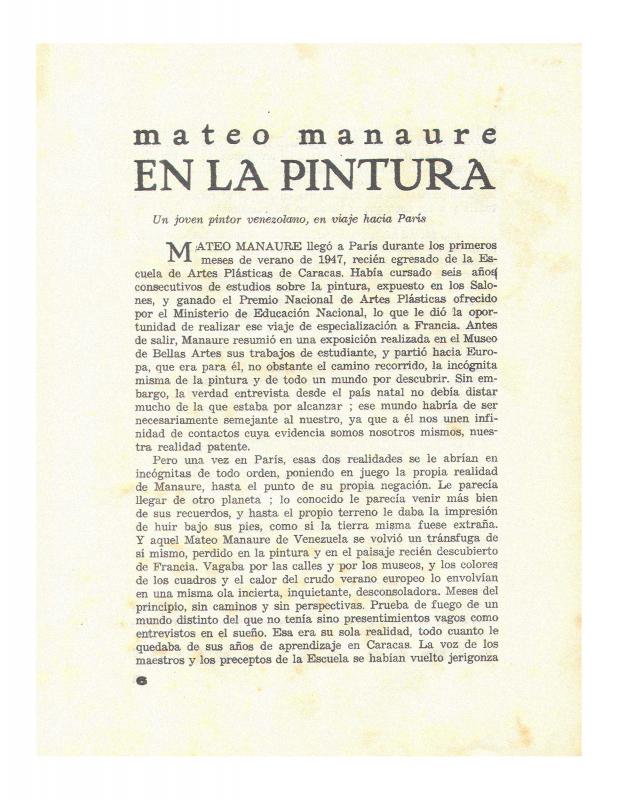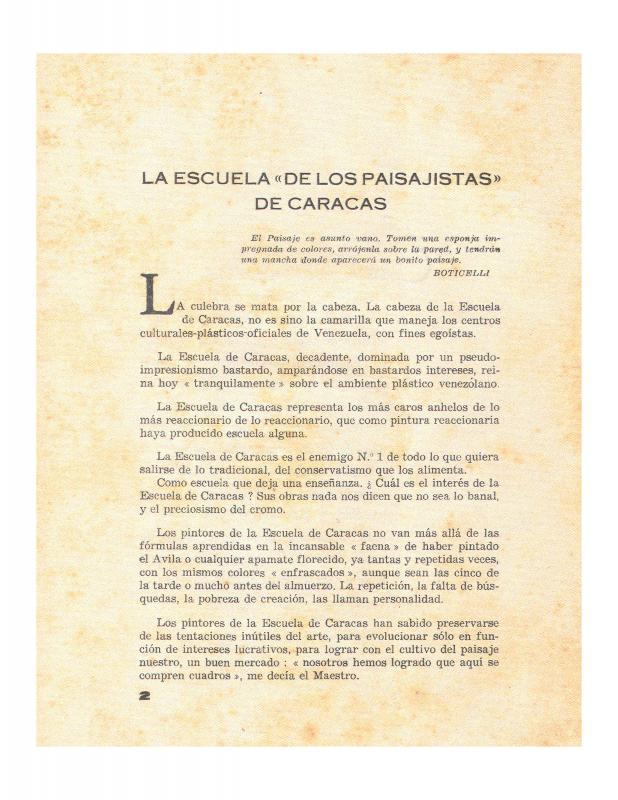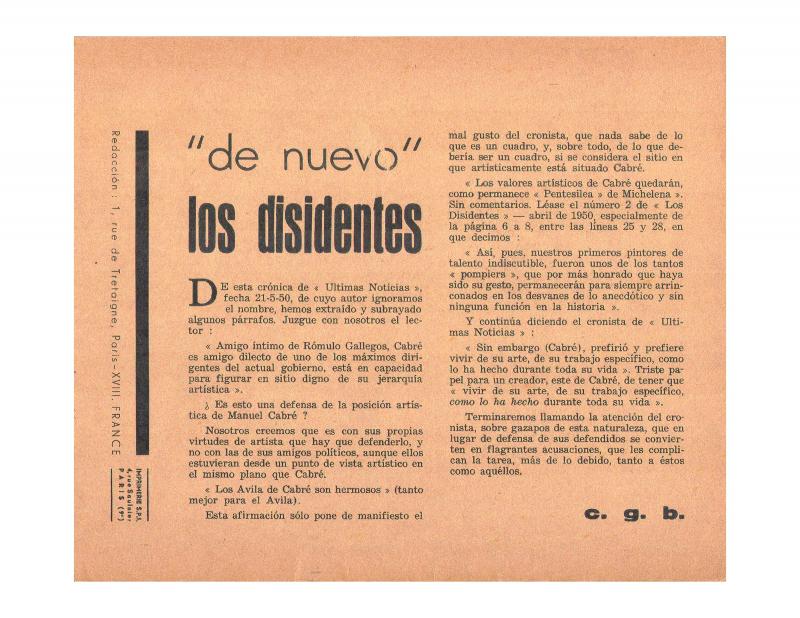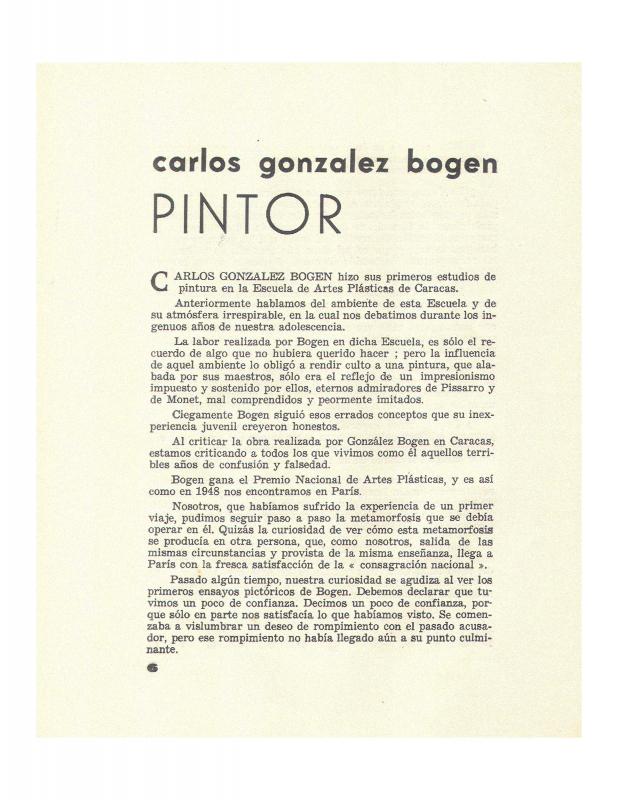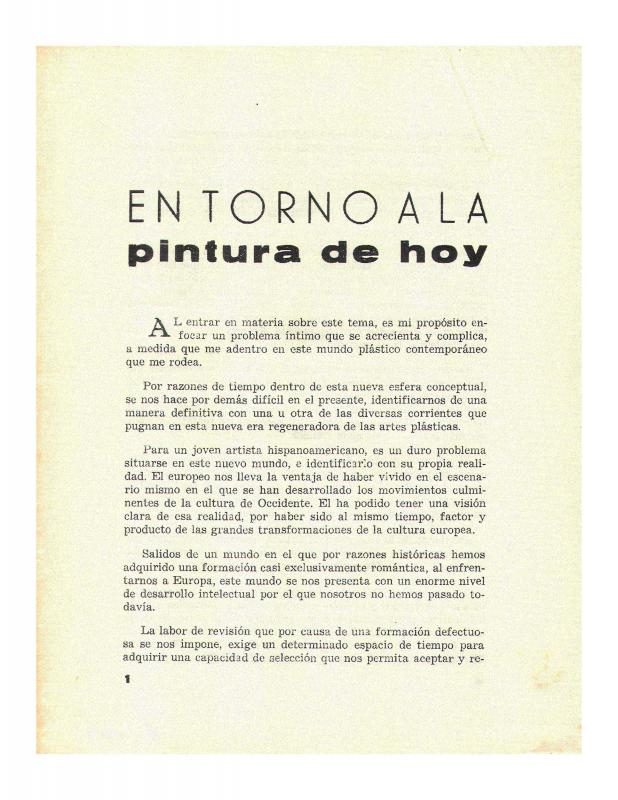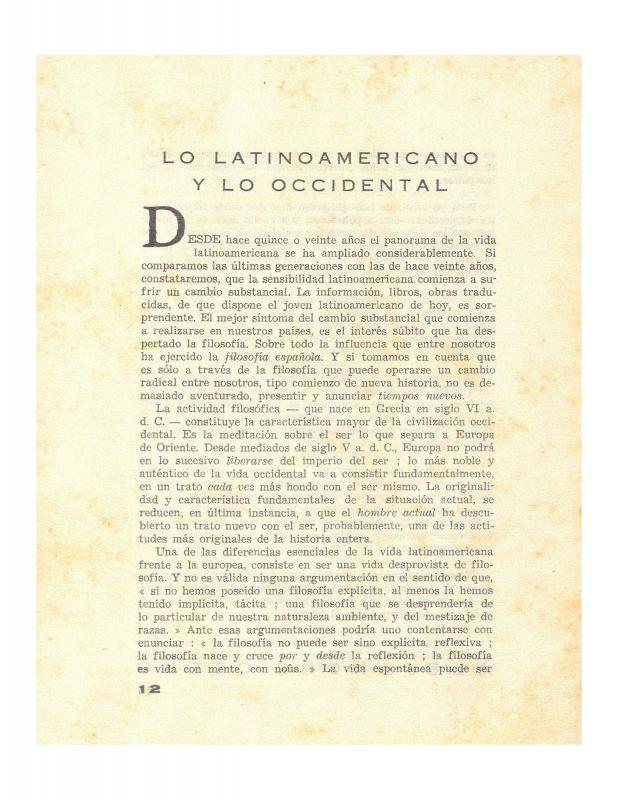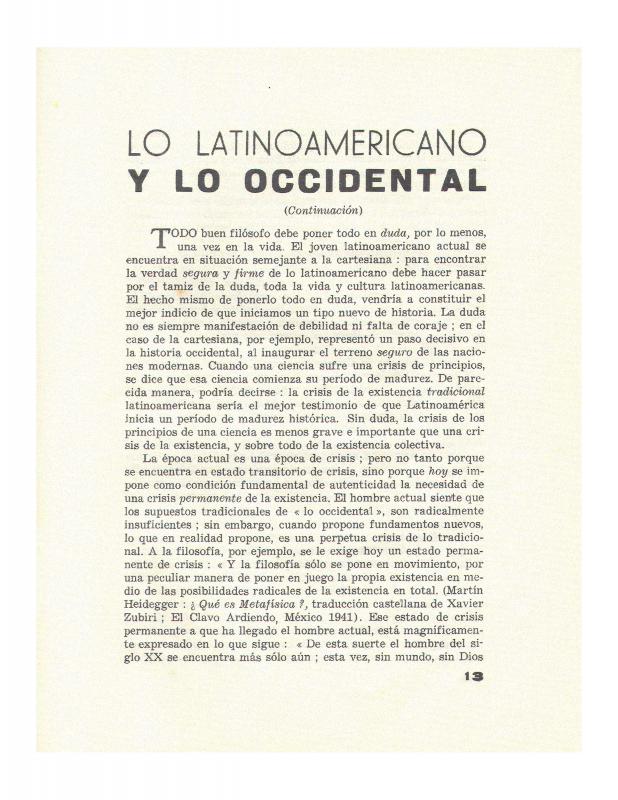This document constitutes the first time in Venezuela that a manifesto is used to present the poetics of a new art. Its concise writing, its short and solemn phrasings, reveal the modern and avant-garde stance of this exhibition’s organizers. Despite claiming to be a continuation of Los Disidentes (Paris, 1950) magazine, the language within does not engage in personal provocations nor the questioning of cultural institutions as was characteristic of the “scandalous” original group. At that time several artists identified with abstractionism returned to the country in order to join the arts integration project led by architect Carlos Raul Villanueva, focused on the construction of the Ciudad Universitaria of Caracas (1952-53). Although the text is unsigned by any author, it may be attributed to the painters Carlos González Bogen y Mateo Manaure. This text is part of the catalogue for the I Exposición Internacional de Arte Abstracto [First International Abstract Art Exhibition] held in Caracas, which included some former members of Los Disidentes —along with such foreigners as Carmelo Arden Quin, Arcay, Biltran, Koskas, Maussion, Ellsworth Kelly and Yougerman—, and beyond comparing concepts (regarding the artist as creator or even destroyer), [this text] is of interest because it gave rise to a third debate regarding the validity, or lack thereof, of abstract art; the other took place in 1948, between César Rengifo and Miguel Arroyo (1948) and the other sparked by Alejandro Otero’s Las Cafeteras [The Coffee Pots] exhibition (1949). The exhibition caught the attention of the then-historian of Caracas, politician and historian Mario Briceno Iragorry, who devoted two articles to it —“Abstraccionismo y carillones [Abstractionism and Carillons] [see ICAA digital archive (doc. no. 850810)] and “Segunda nota sobre abstraccionismo” [Second Note on Abstractionism] (doc. no. 1172069). There was a call into question with Otero in his article [Alejandro Otero debates with Mario Briceño Iragorry on abstract art, carillons and bells” (doc. no. 855479). Other participants in the debate on abstract art and realism included José Hernán Briceño, José Fabián Ruiz, Joaquín Gabaldón Márquez, Alejo Carpentier, Ida Gramcko and the disidente [dissident] González Bogen. The “manifesto” was reproduced by Bélgica Rodríguez in La pintura abstracta en Venezuela: 1945-1965 [Abstract Painting in Venezuela: 1945-1965] (Caracas: Maraven, 1980) and by Roldán Esteva-Grillet in the second volume of Fuentes documentales y críticas de las artes plásticas venezolanas: siglo XIX y XX [Documentary and Critical Sources in the Venezuelan Visual Arts: XIX and XX Centuries] (Caracas: Universidad Central de Venezuela, 2001). Los Disidentes were a group created in Paris in 1950, by Venezuelan artists and writers who lived in the city between 1945 and 1952. From the French capital they fought against the official education imparted by the Escuela de Artes Plasticas of Caracas, whose roots came from landscape and nativism. Doing honor to their name, Los Disidentes sought to achieve a renewal in academic and traditional art through the assimilation of the values of European abstractionism. They produced an eponymous magazine, Los Disidentes, which published five issues, and served as the main dissmination medium [of the group]. [For more on the group, see the following documents in the ICAA digital archive: by Otero, “Del arte abstracto”, doc. no. 813611), (“Las "placas al mérito" y la juventud” , doc. no 813429) and (“Mateo Manaure en la pintura : Un joven pintor venezolano, en viaje hacia París” doc. no. 813639); by González Bogen (“La escuela "de los paisajistas" de Caracas” , doc. no. 813695 and “"De nuevo" Los Disidentes” , doc. no. 813667); by Manaure (“Carlos González Bogen: Pintor”, doc. no. 813583); by Debourg (“En torno a la pintura de hoy”, doc. no. 813597); and by Guillent Pérez tanto “Lo latinoamericano y lo occidental [Parte I]” (doc. no. 813723) as well as “Lo latinoamericano y lo occidental: (Continuación)”, (doc. no. 813478)].

